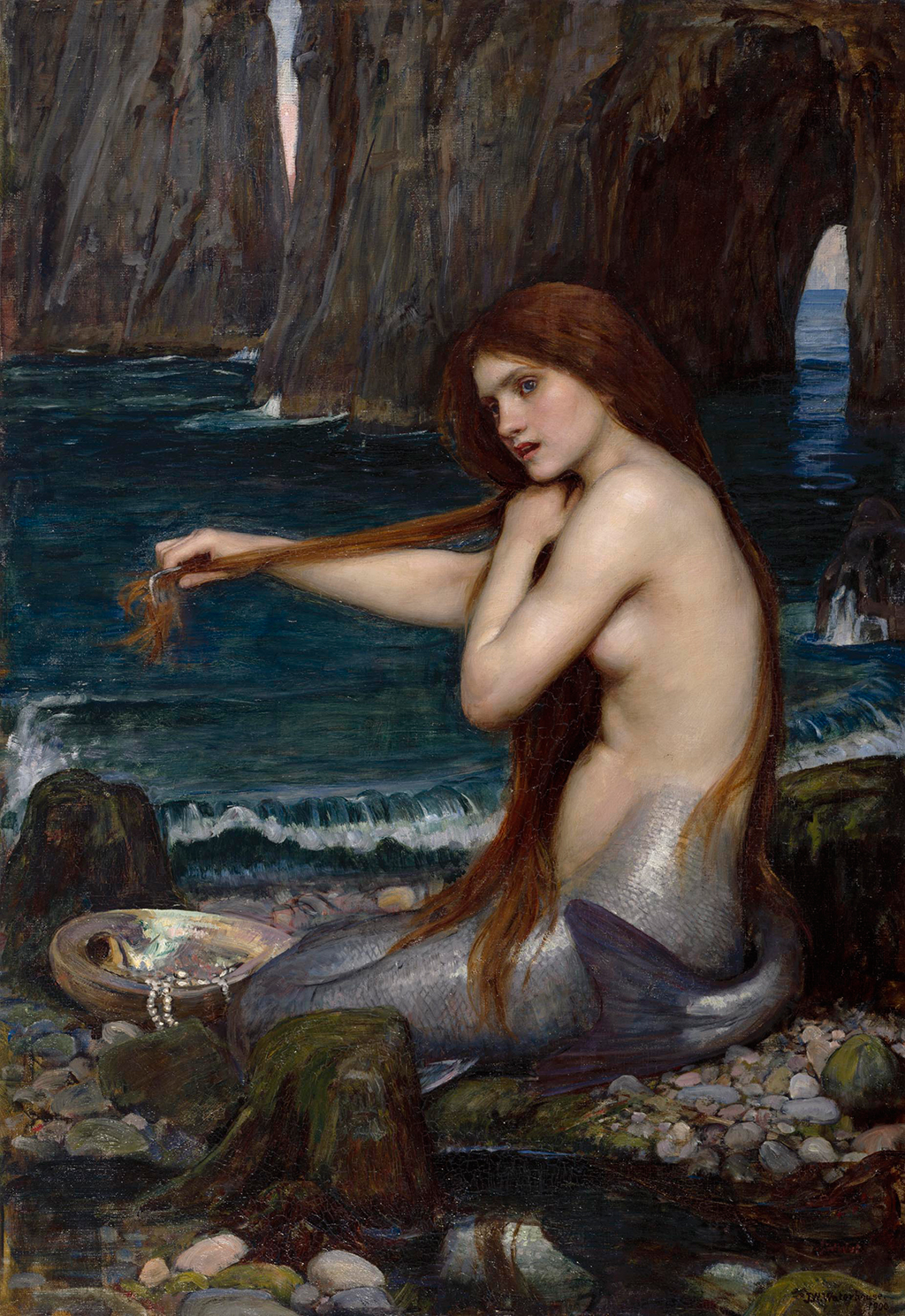Inspiration from Poetry
The original poem was from 1830, whilst this painting from Waterhouse followed in 1900. It was well received by the Royal Academy, an institution that the artist had been strongly connected to for several decades. It was only after he passed away that his own fame was replaced by a greater interest in his specific works, rather than the artist himself.
The poem talks of a Mermaid combing her hair, and this is the depiction chosen by the artist here. The very theme of a mermaid is ideally suited to his preference for depicting the feminine and classic beauty of women alongside themes of mythology and poetry.
Waterhouse also liked to lure the viewer in with seemingly angelic young women, who would represent danger, but in the most enchanting of ways - further examples of this can be found throughout his career and was an integral part of his style that remained fairly consistent throughout his career. The one major evolution that he had was to make use of larger canvases later in his career.
Description
She sits calmly on the shore, as waves draw in around her. An arched rock scene completes the background. The pebbled shore helps to place it within the UK, as with all of his work. The theme may appear to be pure minded at first glance but actually this artist also saw a darker side to this mythological creature, where the elegant femininity could be used to trap men.
Waterhouse would have spent a considerable amount of time on this piece, painting individual rocks and stones which sit besides the mermaid. She has long, red hair which was a favourite of his. She brushes it in a relaxed manner, whilst positioned facing away from us, to the side. Her head is angled towards us, though, helping to bring a connection between the mermaid and the viewer.
The artist had already produced many of the items in this painting in previous works, such as the waves that lap around her, and the rocky environment. The arched rock formation is also found elsewhere. The model herself is also entirely typical of the artist, with the only real variation here being her role as a mermaid, with her scaled lower half sitting quietly on the rocks.
Symbolism
There remains a lack of clarity over quite the artist's specific intentions in this piece, but the pearls found in the scene may have been directly from sailor's tears as they passed away. She also looks alluring, rather than lonely, which would fit better with the theory of the artist using a darker symbolism.
Large Image of A Mermaid
Whilst images of the original painting can differ in colour balances, depending on how they were taken, most underline the beautiful red hair added to the mermaid. Waterhouse saw hair colour as an important way of differentiating his female figures, with many of their other features being fairly similar in terms of build, facial features and skin colour.
This delightful piece is shown in all its glory below, with a larger image which better illustrates all of the work added by Waterhouse back in the early 20th century. The detail and lighting on the mermaid's lower half is particularly impressive, as is the metal basin that sits besides her.


